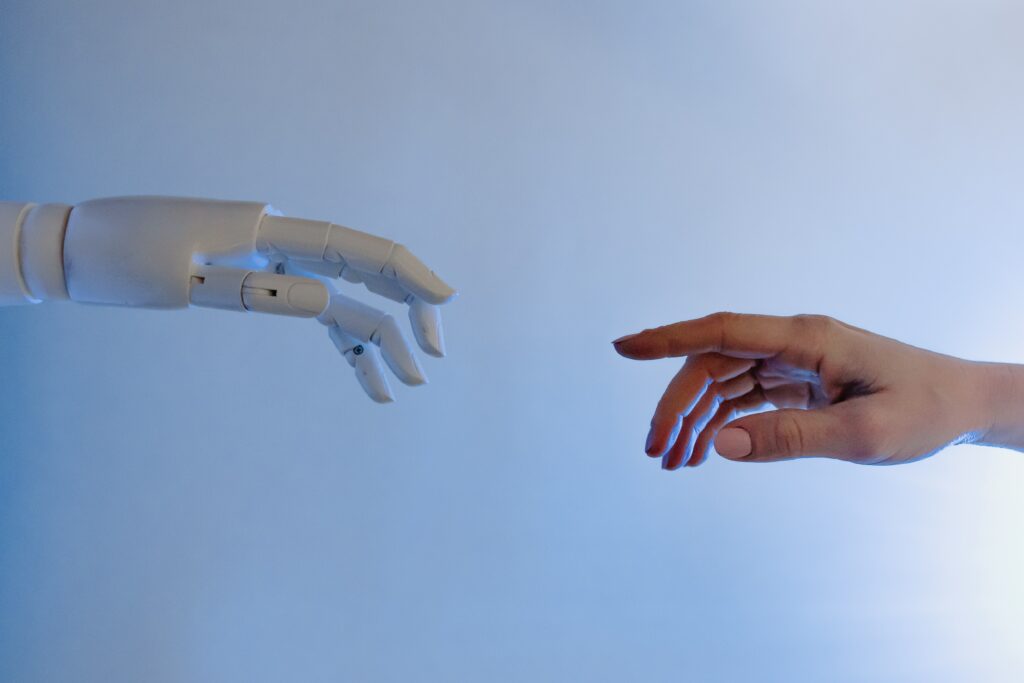Quick Links

We’ve noticed something interesting as we work with more clients on projects and initiatives aimed at adopting AI into their organizations. Maybe you’ve noticed it too. The most significant barrier to embracing AI doesn’t seem to be technical—it’s emotional.
To be sure, learning new skills like prompt engineering will be critical to success. But for AI to really stick, people need to be excited about what the technology can do for them. For many people, this requires recognizing and overcoming some core emotional barriers before embracing AI technology.
Let’s dig into a couple of these core emotional barriers and explore ways to address them.
Leaders need to be aware that adopting AI technology can create insecurity within the team. This frequently appears in information “gatekeeping” or “hoarding” behaviors. The people who have lovingly cared for and maintained datasets for years, sometimes even decades, feel a sense of ownership over the data. And often, a large part of their work identity is tied to being the one who knows every nook and cranny of it.
Now, suddenly, the organization – and potentially an outside vendor – is taking a hard look at the value of the data as measured against the desired outcomes, how it has been managed, and ways it will (or won’t) fit into a future vision. This desire for change can run up against resistance in organizations (or pockets of organizations) where embracing change and new technology hasn’t been a priority. This resistance can slow or even stop projects.
The best approach is to acknowledge and address this fear directly. While it’s true that AI can do many things humans do today, technology also frees humans to do more rewarding, cognitively challenging work. Former super-users and “knowledge keepers” have already demonstrated their ability to learn, make novel connections, and communicate with others. Show them how these skills are valued in a world with AI “team members.”
AI works with human oversight, despite what dystopian films like “Minority Report” imagine. AI can provide great data, deep analysis, and a more accurate idea of probabilities—particularly in the most sophisticated applications.
But ultimately, decision-making is a creative, imagination-driven exercise. It involves risk, but it also includes innovation. Today’s AI can help us better assess risk, but it is no replacement for human judgment and imagination.
As AI is integrated, it’s essential to set and model a healthy relationship between humans and AI “team members.” Leaders should ask: “What are we doing to create a space where employees feel safe to explore and try new things?”
Ensure that everyone has a voice in the adoption process. Paint a vision of what AI can do…then have an open, honest discussion about what it could or should do for your organization.
For people who are just getting caught up on AI and why it’s suddenly entered the global conversation, it might feel overwhelming. It’s common to feel confused or bewildered by the new terms you’re hearing or feel out of your depth because you’ve never been in a technical field. As a leader, it’s important to acknowledge (publicly) that 99% of average people are just now wrapping their arms around this technology. Even the experts don’t have a clear sense of exactly how the technology will evolve over time.
Normalize not knowing the answer and asking questions openly. Offer non-technical, jargon-limited training—focused on practical skills—to your team. Send articles and resources aimed at average users. Paint a picture, in plain language, of how you expect to use AI at your organization or how you anticipate your industry to be impacted by it. Within reason, understand that people learn at different paces, and provide time and space for people to adapt.
Bottom line…Promoting a growth mindset around all types of innovation (not just AI) will go a long way toward smoothing emotional resistance to change.

Practical strategies to help you thrive in Leadership, Project Management, and more.

11 East 5th Street
Suite 300
Tulsa OK 74103
918-592-4121
888-392-7101
| Cookie | Duration | Description |
|---|---|---|
| cookielawinfo-checkbox-analytics | 11 months | This cookie is set by GDPR Cookie Consent plugin. The cookie is used to store the user consent for the cookies in the category "Analytics". |
| cookielawinfo-checkbox-functional | 11 months | The cookie is set by GDPR cookie consent to record the user consent for the cookies in the category "Functional". |
| cookielawinfo-checkbox-necessary | 11 months | This cookie is set by GDPR Cookie Consent plugin. The cookies is used to store the user consent for the cookies in the category "Necessary". |
| cookielawinfo-checkbox-others | 11 months | This cookie is set by GDPR Cookie Consent plugin. The cookie is used to store the user consent for the cookies in the category "Other. |
| cookielawinfo-checkbox-performance | 11 months | This cookie is set by GDPR Cookie Consent plugin. The cookie is used to store the user consent for the cookies in the category "Performance". |
| viewed_cookie_policy | 11 months | The cookie is set by the GDPR Cookie Consent plugin and is used to store whether or not user has consented to the use of cookies. It does not store any personal data. |